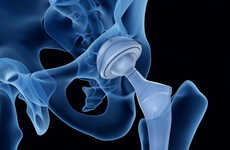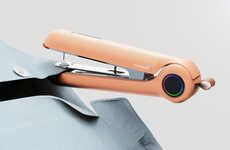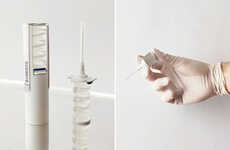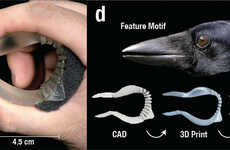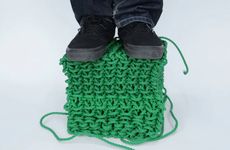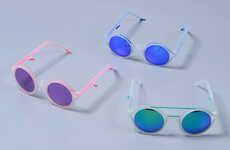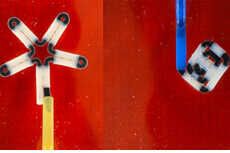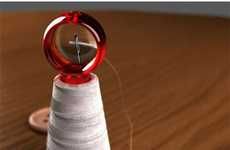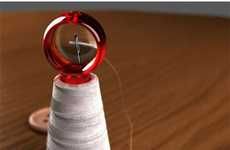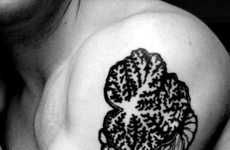
The BigEye Needle Made of Flexible Metal
Michael Plishka — December 17, 2008 — Tech
References: yankodesign
Tools to help string threads through cloth or beads have been around for literally, thousands of years.
Interestingly enough, the basic design of a sewing needle has changed very little over the course of that time. What has changed are the materials. Where once bone was used, bronze replaced, only to be replaced again by steel and plastics.
Now a new type of sewing needle is made through the use of flexible metals. There is no information on the metal, but its behavior looks curiously like Nitinol, the shape memory metal that is used in many life saving coronary stents.
Very cool design, though I can see that pressing on the top could be difficult for folks with sensitive fingers.
Interestingly enough, the basic design of a sewing needle has changed very little over the course of that time. What has changed are the materials. Where once bone was used, bronze replaced, only to be replaced again by steel and plastics.
Now a new type of sewing needle is made through the use of flexible metals. There is no information on the metal, but its behavior looks curiously like Nitinol, the shape memory metal that is used in many life saving coronary stents.
Very cool design, though I can see that pressing on the top could be difficult for folks with sensitive fingers.
Trend Themes
1. Flexible Metal Needles - The development of sewing needles made from flexible metals like Nitinol opens up opportunities for increased durability and versatility in sewing and textile industries.
2. Shape Memory Metals - The application of shape memory metals, such as Nitinol, in sewing needles showcases the potential for disruptive innovation in medical device manufacturing and other industries that require flexible and resilient materials.
3. Ergonomic Needle Design - The exploration of needle designs that address the needs of individuals with sensitive fingers presents opportunities for disruptive innovation in the healthcare and assistive technology sectors.
Industry Implications
1. Textile Industry - The use of flexible metal needles in the textile industry can lead to improved sewing efficiency, reduced needle breakage, and enhanced product quality.
2. Medical Device Manufacturing - Shape memory metals' application in sewing needle production suggests disruptive innovation potential in the medical device manufacturing industry, particularly in areas such as stent development and minimally invasive procedures.
3. Healthcare and Assistive Technology - The development of ergonomic needle designs can offer disruptive innovation opportunities in the healthcare and assistive technology industries, catering to the needs of individuals with sensitive fingers and improving user experience.
2.9
Score
Popularity
Activity
Freshness


